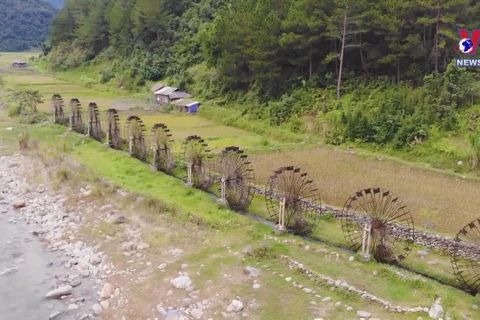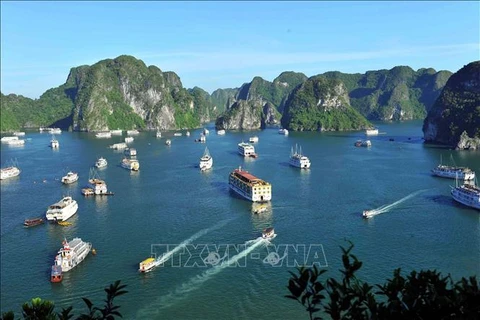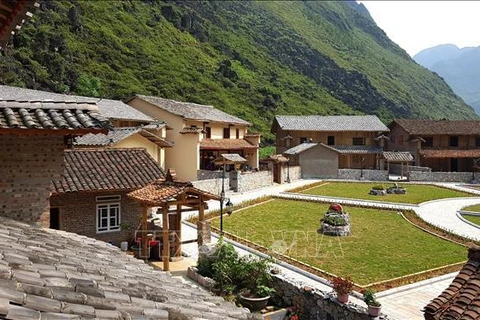 Community-based tourism will help create livelihoods and change economic mindset of residents in disadvantaged localities. (Photo: VNA)
Community-based tourism will help create livelihoods and change economic mindset of residents in disadvantaged localities. (Photo: VNA) Hanoi (VNA) – Experts have shared the view that community-based tourism will help create livelihoods and change economic mindset of residents in disadvantaged localities.
To put the model in place, households only need to make use of the local natural landscapes and their indigenous culture, without much capital.
However, ensuring sustainable livelihoods for local residents during the process remains a headache for authorities.
In an interview granted to VietnamPlus, Pham Hai Quynh, Director of the Asian Tourism Institute and Chairman of the Vietnam Community Tourism Chapter, noted that since the Politburo issued Resolution No. 08-NQ/TW on turning tourism into an economic spearhead, many localities have rolled out the community-based tourism model.
However, the implementation of the document in localities is facing obstacles regarding financing and land, plus the misunderstanding of local authorities about such kind of tourism, he said.
Developing community-based tourism needs joint efforts by ministries, agencies and localities, Quynh said, adding that each of them should be assigned to specific tasks, with clear roadmaps, in order to raise the competitiveness of community-based tourism products.
Since 2020, Vietnam has issued national standards and guidelines in community-based tourism, he noted.
Cities and provinces nationwide should have experts in this field to help the community implement the model more effectively, change their livelihoods and provide products based on indigenous values, Quynh suggested.
According to the expert, Vietnam possesses stunning natural landscapes, which is an invaluable advantage.
Besides, the country is home to 54 ethnic groups that have their own unique culture, he said, stressing the need for authorities to understand the uniqueness during the implementation of the community-based tourism model.
“For example, the culture of Dao people in Ta Phin, Lao Cai province, is not the same as that of the Dao ethnic group in Ha Giang province,” he said. “Each geographical space is associated with its population’s own custom and practices, and researchers must identify differences among ethnic groups.”
To ensure sustainable livelihoods, the community must be interested in and willing to engage in tourism development, and local authorities need to support and accompany them in the process.
The expert took the example of Nam Po, a poor, remote district in the northern mountainous province of Dien Bien, where local leaders, from the commune to district levels, have spent time with the community in tourism development.
The households that offer tourism services will continue with cultural conservation and tourism development, while those who do not will seek other sources of livelihoods, he said, stressing that livelihood and tourism must go in tandem to ensure sustainability.
Quynh said the Asian Tourism Institute has accompanied many models where the community plays an active role like the one in Nam Po, along with others in the northern mountainous provinces of Lao Cai and Cao Bang, the central province of Thua Thien-Hue, and the Central Highlands province of Kon Tum.
For management work, he said local authorities play an important role in ensuring landscape architecture, and fair competition between households.
Sharing his journey with hamlets in community-based tourism development, he said at first, local residents raised concern over benefits and efficiency of the model.
It is a must to make them understand that not only those who engage in tourism but also the entire community benefits from the model./.






















